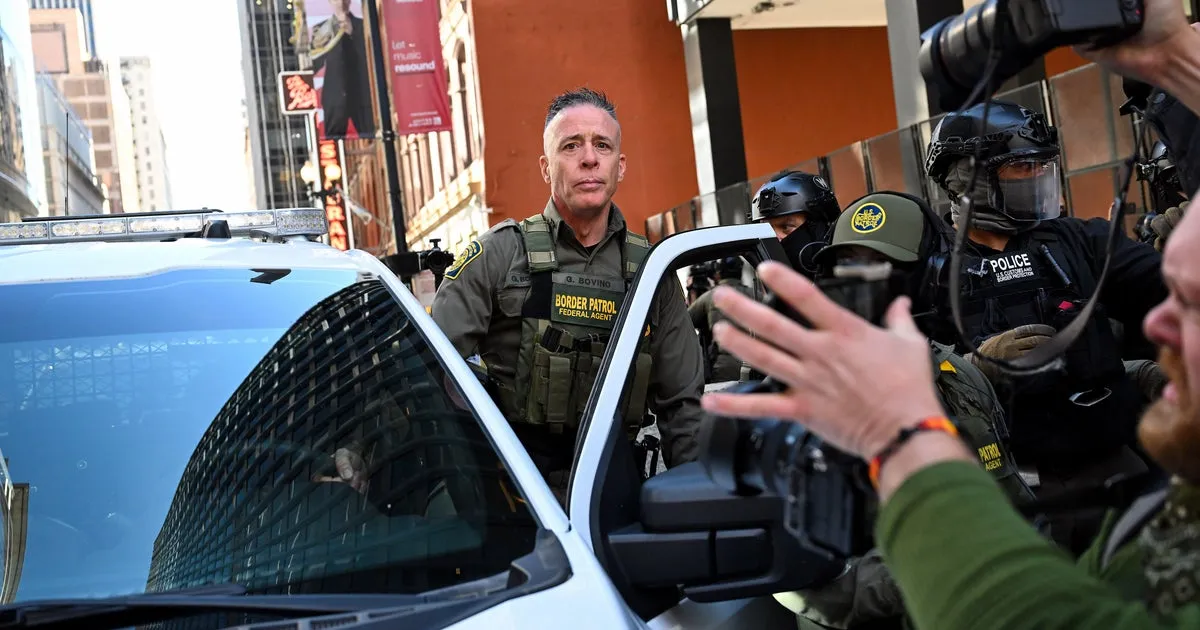
Recent reports indicate that Border Patrol agents are making more arrests in the Chicago area than their colleagues at Immigration and Customs Enforcement (ICE). This trend highlights the expanded responsibilities that Border Patrol has taken on, particularly under the Trump administration. Internal federal government data obtained by CBS News reveals that the number of arrests conducted by Customs and Border Protection (CBP) during the Chicago-area Midway Blitz operation has surpassed those recorded by ICE.
Since September 16, CBP agents have made approximately 1,500 arrests in the Chicago region, while ICE has recorded over 1,400 arrests during the same period. Notably, in mid-October, ICE's tally in the Chicago operation was higher, reaching around 1,000 arrests compared to CBP's 800 at that time. These statistics underscore a significant shift in the role of Border Patrol agents, whose traditional duties have primarily focused on intercepting illegal activities along the U.S. borders with Canada and Mexico, as well as certain coastal sectors.
The Trump administration has aggressively redefined the use of Border Patrol agents, dispatching them to major Democratic-led cities across the country. This nationwide mass deportation campaign has been spearheaded by Gregory Bovino, a Border Patrol sector chief known for leading these operations in cities such as Los Angeles and Sacramento, and more recently, Chicago. Bovino's approach has drawn both criticism and support; critics argue that his tactics are heavy-handed and indiscriminate, while supporters view him as a staunch enforcer of the administration's strict immigration policies.
During the summer, Border Patrol agents in Los Angeles conducted sweeping patrols targeting day laborers at locations like Home Depot parking lots and car washes. These actions prompted significant local backlash, including accusations of racial profiling, which federal officials have denied. Similar scenes have emerged in Chicago, where Border Patrol teams led by Bovino have engaged in aggressive operations, resulting in protests and confrontations with local residents and activists. Social media has showcased instances of Border Patrol agents pursuing individuals in crowded areas, along with confrontations from angry residents.
Bovino's leadership has recently come under scrutiny, as a federal judge in Chicago has ordered his agents to limit their use of force against protesters. The judge mandated that agents provide two warnings before deploying chemical agents, citing incidents where tear gas was used, including one that affected children preparing for a Halloween parade. Federal officials have defended the use of tear gas, asserting it was necessary to protect agents in volatile situations.
The aggressive operations by Border Patrol have sparked tensions within the Department of Homeland Security (DHS). Some ICE leaders feel that the operations conducted by Border Patrol have become overly aggressive, potentially undermining public support for the administration's mass deportation goals. Traditionally, ICE operations have been more targeted and based on intelligence gathering, focusing specifically on individuals with criminal records rather than engaging in broad sweeps.
In a bid to increase deportation levels, top Trump administration officials have considered reassigning approximately half of ICE's 25 field office directors, often replacing them with CBP officials. DHS emphasizes a unified mission, stating, "we have one team and one fight, to secure the homeland." The department has reported over 3,000 arrests of illegal aliens, including serious criminals, as part of the ongoing Operation Midway Blitz.
Despite their historical focus on border security, Border Patrol agents now operate across the country with the same authority as ICE officers to stop individuals suspected of being in the U.S. illegally. Matt Hudak, a retired deputy chief of the Border Patrol, noted that the deployment of Border Patrol agents to U.S. cities is unprecedented. He explained that this shift is due to the agency's larger workforce of approximately 20,000 agents compared to ICE's fewer than 6,000 deportation officers.
With illegal crossings at the U.S.-Mexico border reportedly at a 55-year low, the Trump administration appears to be leveraging the capabilities of Border Patrol agents for interior immigration enforcement. Hudak pointed out that Border Patrol agents may operate with a faster-paced approach compared to ICE officers, which could be advantageous for an administration focused on increasing immigration arrests and deportations. "It's just like a baseball game," Hudak remarked. "If you're not getting the scoring, the game's not going the way you want; you look at another head coach, or you change pitchers during the game to get that different result."